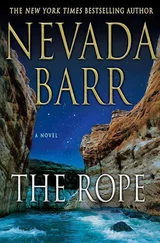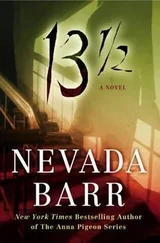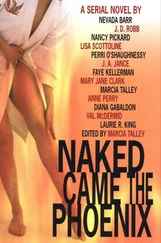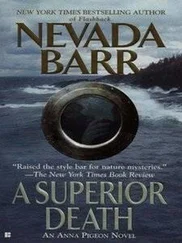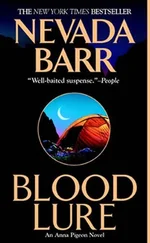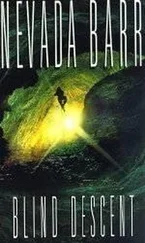She switched off the bedside lamp and let the sleeping bag drop.
Drifting unanchored in the dark, she replayed Katherine. Bob introducing her the first night, Katherine ducking, hiding behind her hair. Bob asking her if they’d ever used ketamine, Katherine blushing and turning away. Katherine insisting on telling the others at Malone Bay that Bob was so strong, he carried her up five flights of stairs.
When she was unconscious. Anna turned the light back on.
Bob had carried Robin back from the V.C.
When she was unconscious.
Bob asked, “Have we ever used ketamine?” Robin lost one of the jab sticks loaded with ketamine and xylazine. Katherine fought with Bob after collecting the dead wolf’s blood. Anna’d had trouble with that. Because Katherine had treated them as such, Anna guessed the blood samples were important but couldn’t figure out why, given the work the researcher had done in the kitchen/lab before the wolf had thawed.
Anna had been assuming there were other samples from that wolf. There weren’t, she realized. Blood had not been collected earlier during the external exam; the wolf and his blood were frozen. There were no other blood samples but those in Katherine’s pocket. The dismembered wolf was blood dry and refrozen. Anna put the revelation that the samples were unique aside for later consideration and went back to Katherine.
Bob was with Robin in the V.C. before Anna arrived. Bob was with Katherine’s corpse in the carpenter’s shed, frisking – or fondling – the dead woman.
Anna wriggled free of her sleeping bag and, turning her back on the staring window, pulled on sweatpants and a turtleneck. She turned the light out again and, feeling her way from desk to door, opened it quietly, slipped through and into Katherine’s room. Making no sound, she closed that door and shoved something soft under it, a towel, she guessed, then turned on the light. The black staring of the uncovered window startled her. Night and wild had always been her friends. Now both made her jumpy.
Katherine’s laptop was on her desk, plugged into the wall to save its batteries. Once, when Anna wished to pry into the lives of dead or uncooperative individuals, she looked for paper: diaries, letters, notes; she listened to phone messages. Now she went straight for the laptop. Unless Katherine had a BlackBerry or an iPhone, the laptop would be where she housed her life when she wasn’t using it.
Having unplugged the laptop, she turned the light out again, dragged back the bathrobe she’d thought was a towel, returned to her own room and completed the operation one more time in reverse. Then she covered the window with Robin’s parka, shoving the sleeves into the grooves of the metal window frame to cover peepholes from the woods. There was probably no need for secrecy. There was probably no one out in the wee hours, peeking in frosty windows. But telling everyone everything hadn’t worked. Anna was switching back to telling no one nothing.
The laptop wasn’t password protected. The screen saver that came up was a photograph of Katherine and an older woman who looked so much like her, she couldn’t be anyone but her mother or an aunt. The two women were laughing, the camera obviously held in front of them in Katherine’s hand, as they yelled “Cheese!”
Anna clicked the START button and began methodically slogging through the files. Unlike paper files, computer files were snooper-friendly. There weren’t mountains of paper to hide the molehills of information. Katherine’s life was laid out and dissected as neatly as the wolf on the table in the carpenter’s shop had been.
Number-oriented, Katherine kept spreadsheets of her personal finances. She earned barely enough to live on but was subsidized by a monthly stipend. From her mother, Anna guessed by the notes Katherine had typed beside two of the entries. She paid her bills by computer. The usual cost of living was there: gas, water, electricity, food, insurance. Not surprisingly, Katherine spent about three times as much on books as she did on clothing and got her hair cut at a walk-in shop at the mall for ten dollars a visit.
She had been on the antidepressant Effexor for eighteen months. Half of America was on antidepressants, but Katherine had been given a hefty dose, 250 milligrams daily, plus.75 milligrams of Trazodone, an antidepressant and sleep aid. There were weekly payments to a Dr. Lewis. A psychologist, Anna assumed, from the regularity and frequency. Dr. Lewis’s name had appeared at about the time of the prescription payments for the antidepressants. The month prior to the advent of the mental health expenditures was an entry to another doctor with the note “D &C” alongside it. Other entries in the medical expenses were marked “co-pay.” This one wasn’t.
Maybe an abortion.
Then depression.
Under the file named “Black Ops,” Katherine had saved sixteen articles from newspapers and periodicals as ridiculous as The Star and as sublime as The Journal of the American Medical Association on the subjects of amnesia, traumatic amnesia, fugue states, repressed memory and multiple personalities.
The folder “Possibilities” contained short synopses of what Anna assumed were personal profiles from a matchmaking Web site. After each was written a number and a letter. Shorthand, possibly for the number of times they’d contacted and the letter grade Katherine had used to rate the contacts. There were considerably more F’s and D’s than A’s or B’s. The last entry had been two months before the “D &C” entered into the medical bills. One of the A’s or B’s might have been the father of the D &C. Or Katherine might have stopped dating – or shopping – at the time she became pregnant. What, if anything, this had to do with her death by wild animal attack a year and a half later Anna couldn’t fathom.
Under the file name “The Great Escape” were fragments of sentences, as if Katherine had been jotting down ideas or keeping a list.
THERE’S NO SUCH THING AS NEGATIVES ANYMORE.
IF MOTHER WAS DEAD, WHO WOULD CARE?
MURDER OR SUICIDE.
IF I WERE DEAD, WHO WOULD CARE?
MOTHER.
MURDER’S A DONE DEAL.
EVERYBODY’S ON THE NET.
WHO WOULD HIRE ME?
I WOULD DIE.
“Well, that’s just cryptic as hell,” Anna muttered. The list gave the impression Katherine was thinking of killing her mother or herself or her mother, then herself. The mother that gave her money every month. The mother she was hugging and laughing with on her screen saver.
THERE’S NO SUCH THING AS NEGATIVES ANYMORE.
The list that followed was nothing but negatives. “Everybody’s on the Net,” Anna read aloud. “Who would hire me? I would die.”
She minimized that screen and clicked on a file named “Pictures” from the main menu. Given the propensity to save everything when space is measured in gigabytes, Katherine hadn’t saved many photographs. Most were of animals, wild and domestic, that had been taken with more love than skill. There were a half dozen of Katherine taken with the woman on the screen saver, winter shots with mufflers and skis, both women smiling and laughing.
There’s no such thing as negatives anymore.
Because few people used film. Katherine had been talking about digital photography. Anna returned to the list saved in “The Great Escape” folder. Viewed from the perspective of photography, it made sense.
There’s no such things as negatives – in the classic stories of blackmail, victims had to buy back the negatives of incriminating photographs.
If Mother was dead, who would care? If Katherine was referencing compromising photographs this suggested, not that no one would miss Mother but that Mother was the person Katherine was most concerned about seeing the photographs.
Читать дальше

